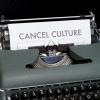Dear Director Johnnetta B. Cole and other staff members of the Smithsonian National Museum of African Art,
I am writing to you today with a simple request: take down the pictures of Bill Cosby in your current exhibition Conversations. Remove the portraits of him and the quotes by him, the lines of wall text that make Bill Cosby sound like a kind-hearted family man. Because Bill Cosby, contrary to what the television show had us believe, is not a kind-hearted family man. He is, I believe, a sexual predator and a serial rapist.
I’m not sure if you’ve yet read New York magazine’s cover story this week, in which 35 of the 46 women who’ve publicly alleged that Cosby sexually assaulted them tell their stories. If you haven’t, I urge you to do so immediately. It is a horrifying, excruciating thing to read, but it is necessary. After decades of fear and silence, these women have found the courage to speak. After ignoring the allegations and the rumors swirling around Cosby for years, it’s the very least we can do to listen to them.
What does listening to this testimony mean? I have been crying a lot, that’s one kind of response. But there can and should be, I think, a more active way to listen — a way that signals to these women: ‘Not only do we hear you, but we believe you.’
The way for you to show these women that you believe them — that you “in no way condone Mr. Cosby’s behavior” — is to modify your exhibition of works from the Cosbys’ collection. Now.
I am not the first person to suggest this. Writing in the Atlantic last fall, Kriston Capps suggested that you “offer to strike the Cosbys’ name from the show.” At the time, I wasn’t sure if I agreed, but circumstances have changed. Documents were released that show Cosby himself admitting to procuring Quaaludes in order to give them to women with whom he wanted to sleep. The testimonies of the women in New York magazine show a chillingly clear pattern not just of sexual assault but of planned, purposeful predation.
Bill and Camille Cosby discussing their art collection in a video produced by the Smithsonian National Museum of African Art
There has been more news about Conversations, too. The AP reported that the Cosbys funded almost the entire thing — which, when considered alongside the fact that Camille Cosby sits on your board and initiated the loan, does not add up to a very ethically sound show. But fine, the exhibition is up, and you argue that “it is fundamentally about the artworks and the artists who created them, not Mr. Cosby.” This relates to an argument I have heard before, since beginning this public conversation — that it is the artists who will suffer if the show comes down; their work is distinct from the man who, along with his wife, collected it.
Yet from all I’ve read about the show, it seems it is not really exclusively about the artworks and the artists who created them. Washington Post art and architecture critic Philip Kennicott recently revisited Conversations, and on the walls he found more than 40 appearances of Cosby’s name, plus, more broadly, “an exercise in hagiography, full of soft-focus and flattering images of the Cosbys, a painting by their daughter and multiple citations from the couple explaining their love of art.” If we are worrying about the careers and reputations of these artists, well, I don’t think that having their work shown in the context of a glowing picture of Bill Cosby is doing them any favors right now.
In his visit, Kennicott picked up on the patriarchal, “family-friendly” values of the exhibition, writing: “This isn’t about borrowing art from an unsavory rich guy; it’s about hosting an exhibition that celebrates the family life and character … of a married man who by his own admission acquired Quaaludes to give to women he wanted to have sex with.” As partial evidence, Kennicott cites a quote that stood out to me as well when I read through the text on the exhibition’s website (emphasis mine):
The Cosbys commissioned The Family in a tribute to their own family. … The personal importance of family to the collectors cannot be overstated, but the critical mass of images of family and maternity in the Cosby collection speaks to the larger importance of family in the maintenance and transmission of African American culture.
Much of the exhibition text reads like this: flattering, warm and fuzzy, tribute-like. In a Word document included in the press packet, four full paragraphs in a row discuss the importance of quilts to the Cosbys in their valuing of family and kinship. There is the Faith Ringgold piece titled “Camille’s Husband’s Birthday Quilt” (1988), which features images of the Cosby family; there is a quilt made in memory of the Cosbys’ dead son; and there is “a stunning group portrait dedicated to the memory of relatives and important mentors of Bill Cosby’s” by Whitfield Lovell.
Crossroads Quilters, "The Ennis Quilt" (1997), collected scrap fabric, Ennis Cosby’s clothing, 370.8 x 294.8 cm (146 x 116 in), Collection of Camille O. and William H. Cosby Jr. (photo by Jerry Thompson)
Crossroads Quilters, “The Ennis Quilt” (1997), collected scrap fabric, Ennis Cosby’s clothing, 370.8 x 294.8 cm (146 x 116 in), Collection of Camille O. and William H. Cosby Jr. (photo by Jerry Thompson)
“The importance of remembering and honoring family in visual form is a strand that runs through the Cosby collection,” the exhibition text says. Compare those words with this testimony from Barbara Bowman, published in New York magazine:
It was a predatory grooming process that was very subtle and very manipulative. He was America’s favorite dad. I went into this thinking he was going to be my dad. He zoned right in on my insecurities. He convinced me that he was going to take care of me like a father, that he loved me like a daughter. To wake up half-dressed and raped by the man that said he was going to love me like a father? That’s pretty sick.
Hopefully by now you can see the problem.
Look, I understand that this is complicated. No one — least of all people who collect art! — is flawless, and countless artists, creators, and others have committed horrible deeds. But it’s one thing to have a name in small print on a wall label indicating the source of a loan; another to have that name included in the exhibition’s subtitle and plastered on the walls waxing profound about the art (and spelled out formally as if he were a different, more distinguished person: William H. Cosby Jr.). It’s one thing to continue to engage with the art of a creator who was also a rapist; another to continue lauding him as a visionary man who collects important art and through that process upholds “family values.”
In good faith, I’ll leave aside the issue of whether this show should have ever been organized in the first place, as well as the problem of it including art by the Cosbys’ daughter (another clear indication of the questionable ethics at work here, as if we needed more). The exhibition is on the walls, and hopefully someone will gain some educational benefit from it to make it worthwhile. In the meantime, you have six months left to do something. Six months in which to make a statement, to tell the 46 women — and the likely more who haven’t come forward — that you believe them, by stripping the show of its hagiography and pushing it to a sounder place. (And if the Cosbys object, if they pull out? Well, that says all we need to know, doesn’t it?) Six months left to demonstrate that morals can still be more important than money and celebrity, even a little bit, even in the art world.
Sincerely,
Jillian Steinhauer
















